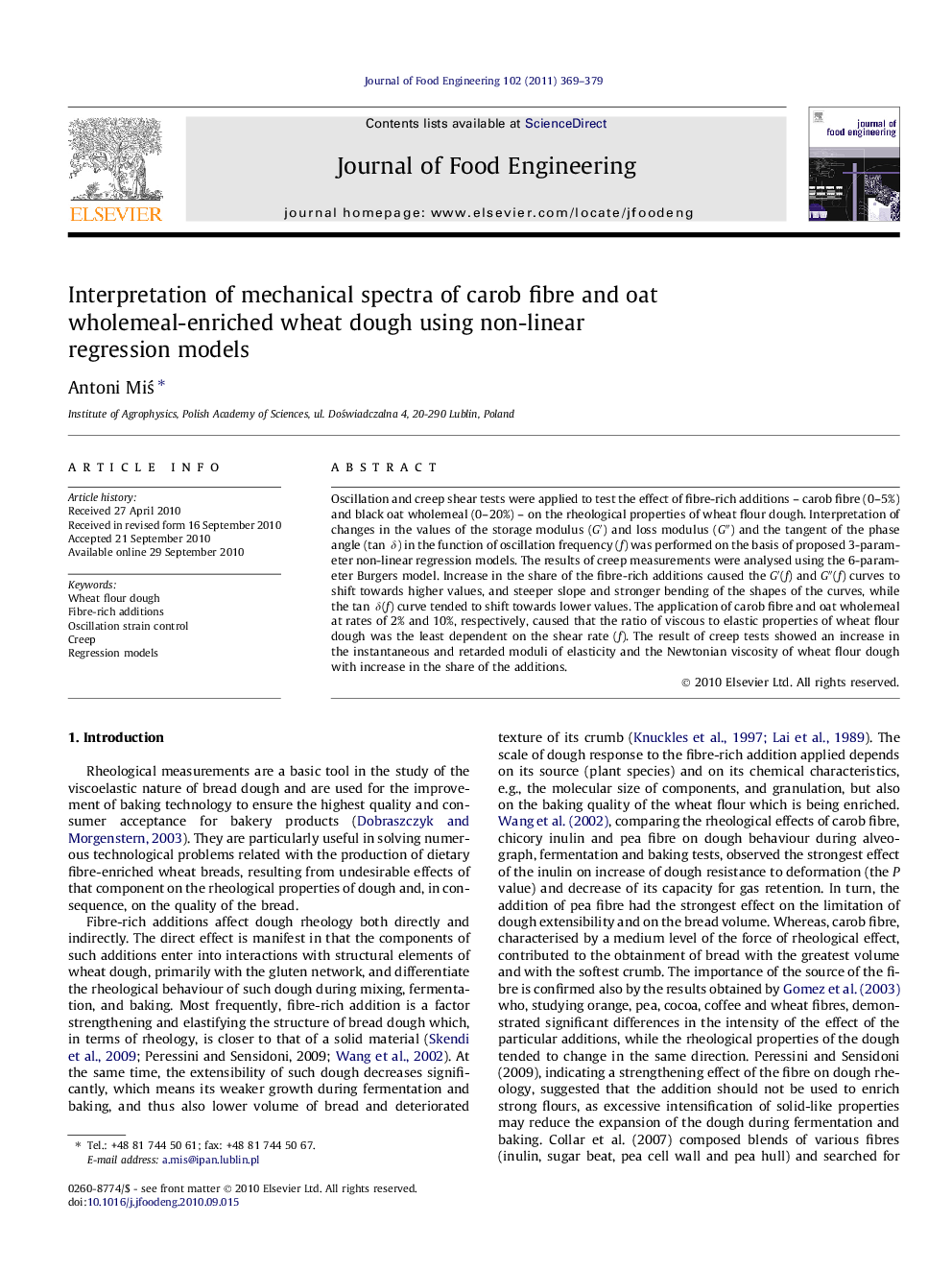| Article ID | Journal | Published Year | Pages | File Type |
|---|---|---|---|---|
| 224263 | Journal of Food Engineering | 2011 | 11 Pages |
Oscillation and creep shear tests were applied to test the effect of fibre-rich additions – carob fibre (0–5%) and black oat wholemeal (0–20%) – on the rheological properties of wheat flour dough. Interpretation of changes in the values of the storage modulus (G′) and loss modulus (G″) and the tangent of the phase angle (tan δ) in the function of oscillation frequency (f) was performed on the basis of proposed 3-parameter non-linear regression models. The results of creep measurements were analysed using the 6-parameter Burgers model. Increase in the share of the fibre-rich additions caused the G′(f) and G″(f) curves to shift towards higher values, and steeper slope and stronger bending of the shapes of the curves, while the tan δ(f) curve tended to shift towards lower values. The application of carob fibre and oat wholemeal at rates of 2% and 10%, respectively, caused that the ratio of viscous to elastic properties of wheat flour dough was the least dependent on the shear rate (f). The result of creep tests showed an increase in the instantaneous and retarded moduli of elasticity and the Newtonian viscosity of wheat flour dough with increase in the share of the additions.
